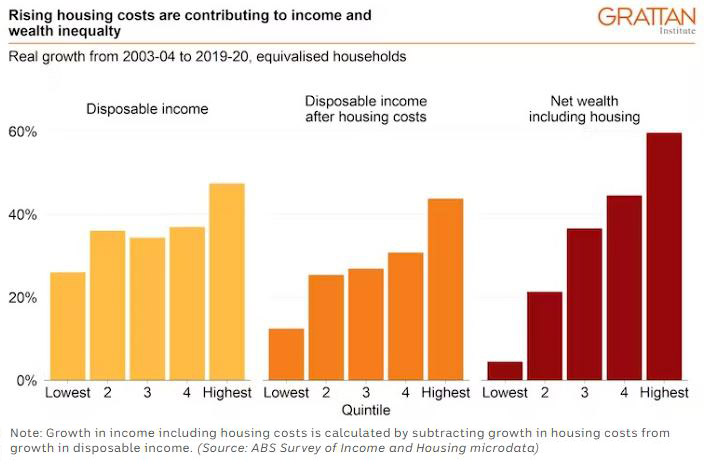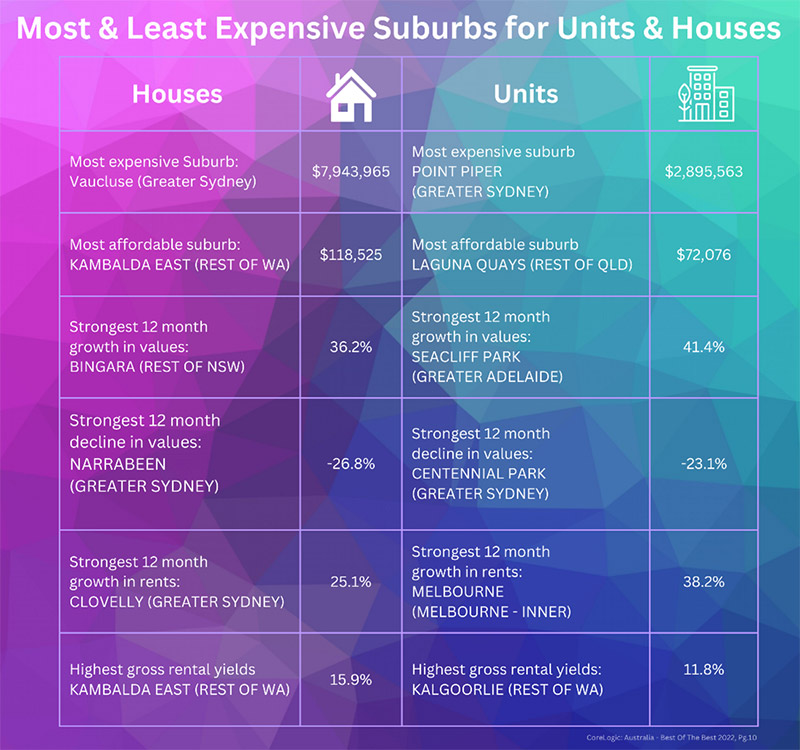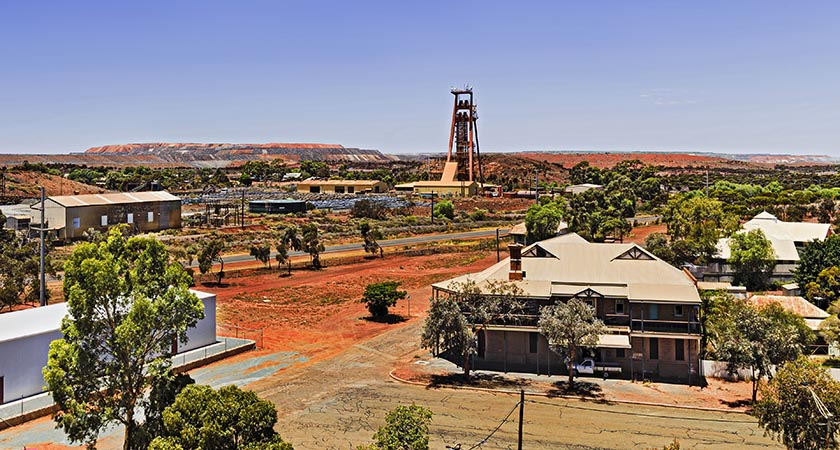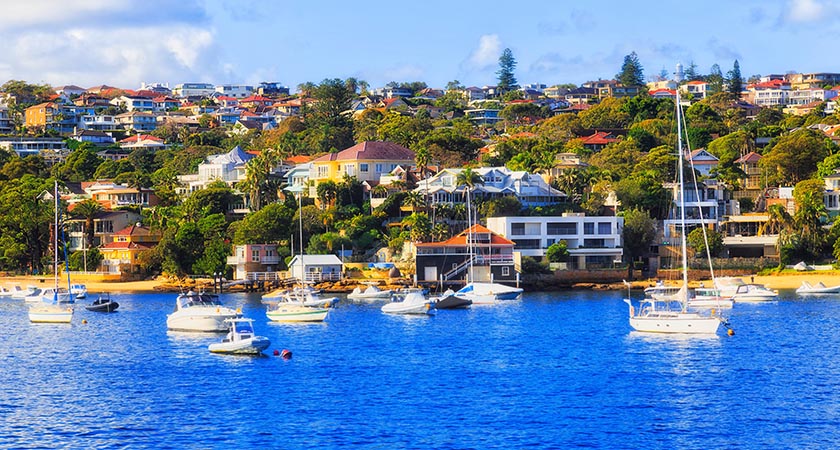The most and least expensive suburbs to buy property in Australia
What are the cheapest and most expensive suburbs in which to buy property in Australia and in your state?
Australia’s wealth is very unevenly divided, and the country’s housing market is one of the most significant and visible elements of this inequality.
From the elite in Australia’s most expensive suburb, Vaucluse, New South Wales, to mining and working class labourers of the country’s cheapest housing market, Kambalda East in the West Australian Goldfields, the standards of living across the continent are exemplified by our real estate options.
Reports by ACOSS/UNSW have shown that the highest 10 per cent of households by wealth possesses an average of $6.1 million or 46 per cent of all wealth. The next 30 per cent has an average of $1.7 million or 38 per cent.
That leaves the majority – the lower 60 per cent – with an average of $376,000 or just 17 per cent of all wealth.
The report shows that more than 130 billionaires in Australia each hold an average of $3.6 billion in wealth.
More than 130 billionaires in Australia each hold an average of $3,600 million in wealth.
When it comes to looking at Australia’s priciest and most affordable areas, it is worth bearing in mind a few telling statistics around home ownership and wealth accumulation, or for many, deterioration.
The last Census showed that among younger and poorer Australians, home ownership fell from 60 per cent to 40 per cent among 25-34 year-olds between 1981 and 2021.

Property remains a major driver and reflector of wealth. More than a quarter of homeowning households report a net wealth exceeding $1 million, compared to a median net wealth for non-homeowning households at a lowly $60,000.
So where in Australia, the world’s richest country, is this inequality of wealth playing out most tellingly? Which are the most expensive – and conversely least expensive – suburbs or postcodes in which to buy property throughout Australia?
Most and least expensive suburbs
According to research by online financial brokers Savvy, when it comes to houses, the most expensive suburb to buy into is the leafy and upmarket suburb of Vaucluse in Greater Sydney, with an eyewatering median house price of $7,943,965. The most expensive suburb to buy units is also in NSW, in Point Piper at $2,895,563.
The least expensive suburb or most affordable suburb to buy residential property is Kambalda East, in the east of WA with a median house price of $118,525. The cheapest suburb to purchase a unit was Laguna Quays in Queensland at a rather modest $72,076, around the price of an electric vehicle.
The strongest 12-month decline in values of residential houses was in Greater Sydney’s Narrabeen, declining 26.8% with Centennial Park experiencing a dip of 23.1 per cent in unit values.

The suburb with the strongest 12 months of growth in values was Bingara in NSW at 36.2 per cent. The strongest 12-month growth in values for units was Seacliff Park in greater Adelaide, climbing 41.4 per cent.
The strongest 12-month growth in rents for houses was Clovelly in Greater Sydney on 25.1 per cent. Given its aforementioned status as the national benchmark for affordability, the fact Kambalda East also recorded the highest gross rental yields of 15.9 per cent, due to the demand for mining accommodation, could put it firmly on the radar of property investors.
The highest 12-month growth in rents for units was in Inner Melbourne on 38.2 per cent, and the highest gross rental yields for units was in Kalgoorlie, which borders Kambalda East, with 11.8 per cent.
Property value breakdowns of capital cities
As mentioned, the most expensive suburb to purchase a house in a capital city was Vaucluse, followed by Bellevue Hill with a median of $6,882,484 and Rose Bay on $5,660,910. All three suburbs are found in Greater Sydney.
The most affordable suburbs are Elizabeth North in Greater Adelaide with a median house value of $291,526; Kwinana Town Centre in Greater Perth, comprising suburbs such as Orelia, Medina, Parmelia and Calista, is next with $300,252, and Elizabeth Downs in Greater Adelaide at $305,336.
As for units, Point Piper comes first, with Darling Point next on $2,371,718 and Millers Point on $2,111,672.
The most affordable or least expensive suburbs for unit purchases is Orelia, with a median value of $183,522, followed by Greater Brisbane’s Kooralbyn ($202,039) and Goodna ($233,334).
Property price extremes by state
NSW
The most expensive suburb to buy houses and units were, as mentioned, in Vaucluse and Point Piper.
The most affordable suburb in NSW to buy a house was in Peak Hill at $180,870. The most affordable suburb for units is Lavington on the Murray with a median house price of $251,406.
Victoria
The most expensive suburb to buy a house in Victoria is Toorak, with a median house price of $4,955,630. The most expensive suburb to buy a unit is Beaumaris at $1,209,944.
The most affordable suburb to purchase a house in Victoria is Hopetoun in the North West, with a median house price of $178,811. The most affordable suburb for buying units is the regional Gippsland town of Moe on $245,467.
Queensland
Queensland’s most expensive suburb to buy a house in was Sunshine Beach, with a median price of $2,198,404. As mentioned, Noosa Heads was the most expensive suburb in which to purchase a unit.
The most affordable suburb for houses is Tara in the Darling Downs at $146,122, and for units, the previously mentioned Laguna Quays.
WA
One can find the most expensive suburb to buy a house in WA in Peppermint Grove, with a median house price of $3,178,788. The most expensive suburb for units is North Fremantle, with a median house price just shy of $902,683.
The most affordable suburb as mentioned was Kambalda East, with the most affordable suburb for units being Withers in Bunbury at $131,547.
SA
The most expensive suburb to purchase a house in South Australia is Toorak Gardens, with a median house price of $2,067,074. Kent Town is the most expensive suburb to purchase a unit, averaging $655,239.
The most affordable suburb for house purchases is Peterborough, with a median house price of $130,627. The most affordable suburb for units is Mount Gambier with a median unit price of $245,692.
Tasmania
Tasmania’s hottest property market for houses was found in Hobart’s Battery Point, with the median topping out at $1,464,685. It was also the most expensive suburb for units, with a median price of $865,562.
The most affordable suburb for houses was Rosebery on $163,884 and Mowbray for units on $333,200.
NT
Darwin’s most expensive suburb is in Nightcliff, with a median house price of $919,048. Units are most expensive in Bayview at a median price of $547,739.
The most affordable suburb for houses is the outback town of Tennant Creek, with houses costing a median $239,590. The most affordable suburb for units is Bakewell in Darwin, topping out at $284,341.
ACT
Our smallest territory’s most expensive suburb for house prices is Griffith at $2,265,479; units are the most expensive in Yarralumla, at $1,124,600.
The most affordable suburb for houses is Belconnen at $614,531; the most affordable suburb for units is Curtin at $405,491.
What’s next for the Australian property market?
The housing market will be shaped largely by what the Reserve Bank does – or doesn’t do – next. Increases in interest rates usually correspond with lower demand for property, which drives prices down.
As for consumer sentiment, the “time to purchase a house” component of Westpac-Melbourne Institute consumer mood survey increased by 2.4 per cent over the course of December.
Adrian Edlington, Savvy’s finance spokesperson, said waiting for prices to hit rock bottom as rates continue to rise may be a bit of a ‘fool’s errand.’
“Right now, house prices are falling across the board, and some may be waiting to pick up a bargain at the floor, which means first time buyers and investors are at the upper hand in negotiation for the first time in a long time,” he says.
“This advantage may be short lived, though.
“If you wait for houses to hit the absolute rock bottom prices, chances are you’ll be locking in an interest rate that’s at the highest it’s been since the end of the Global Financial Crisis.
“It’s doubtful we’ll see the ‘bad old days’ of seventeen percent rates like we did in the 1990s, but even slight upticks in RBA cash rates can make all the difference between servicing a loan for some and missing out entirely.”























